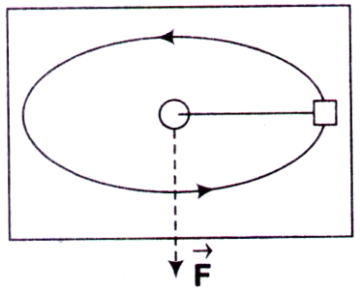A planet moves around the sun in an elliptical orbit with semi-major axis a and time period T. T is proportional to
A. a2
B. $${{\text{a}}^{\frac{1}{2}}}$$
C. a3
D. $${{\text{a}}^{\frac{3}{2}}}$$
Answer: Option D
Solution (By Examveda Team)
According to Kepler's third law, the square of the period of revolution (T) of a planet around the sun is proportional to the cube of the semi-major axis (a) of its elliptical orbit.Thus, T2∝a3
Taking the square root on both sides, we get:
$$T∝ {{\text{a}}^{\frac{3}{2}}}$$
Hence, the time period (T) is proportional to $${{\text{a}}^{\frac{3}{2}}}$$ which corresponds to Option D.
Join The Discussion
Comments (1)
Related Questions on Classical Mechanics
A. increases till mass falls into hole
B. decreases till mass falls into hole
C. remains constant
D. becomes zero at radius r1, where 0 < r1 < r0
A. $$\frac{c}{3}$$
B. $$\frac{{\sqrt 2 }}{3}c$$
C. $$\frac{c}{2}$$
D. $$\frac{{\sqrt 3 }}{2}c$$
The Hamiltonian corresponding to the Lagrangian $$L = a{{\dot x}^2} + b{{\dot y}^2} - kxy$$ is
A. $$\frac{{{p_x}^2}}{{2a}} + \frac{{{p_y}^2}}{{2b}} + kxy$$
B. $$\frac{{{p_x}^2}}{{4a}} + \frac{{{p_y}^2}}{{4b}} - kxy$$
C. $$\frac{{{p_x}^2}}{{4a}} + \frac{{{p_y}^2}}{{4b}} + kxy$$
D. $$\frac{{{p_x}^2 + {p_y}^2}}{{4ab}} + kxy$$
A. circular
B. elliptical
C. parabolic
D. hyperbolic


option D is correct